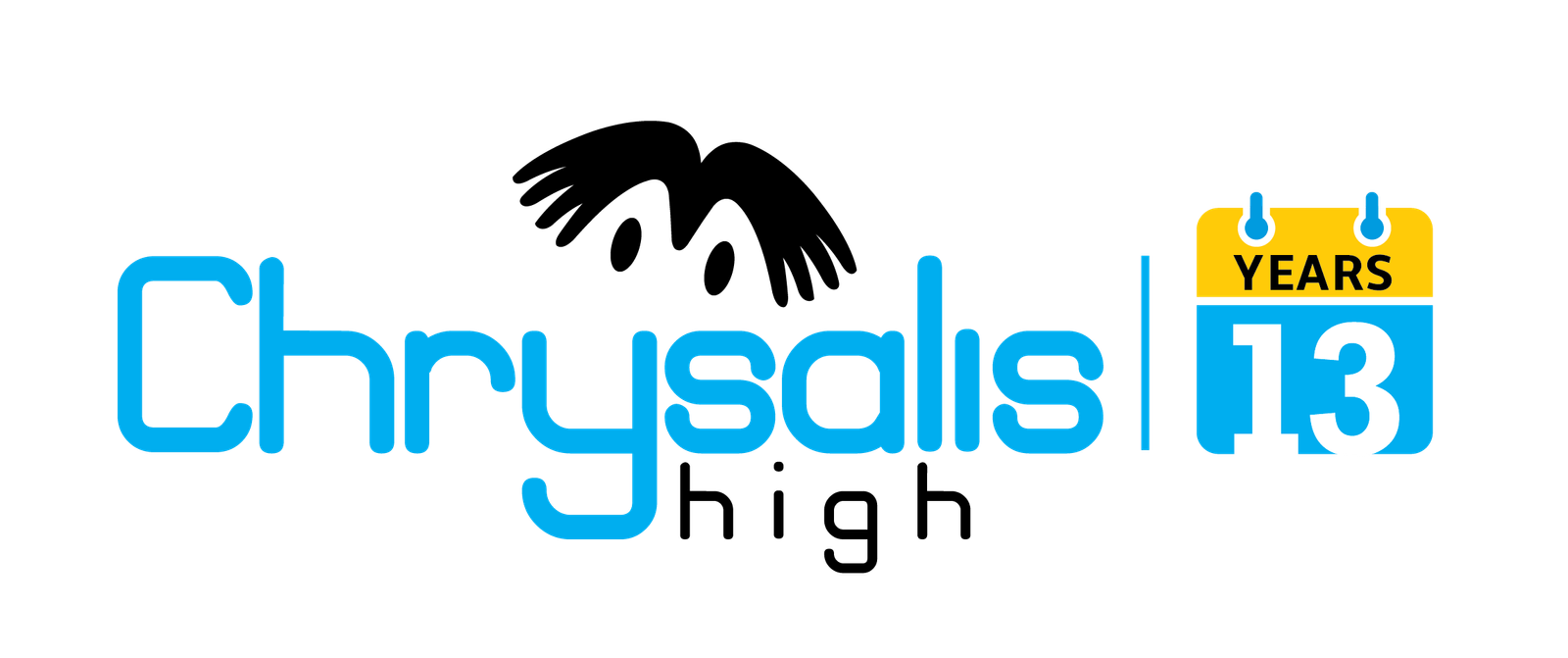Firstly, on a thrilling trip into the beautiful field of three-dimensional images with our thrilling picture book designed for young learners. Overflowing, with dazzling colours and thrilling graphics, this educational adventure introduces kids to the exciting world of 3D shapes in a fun and kid-friendly way.
Each shape comes from the familiar cube well to a nice circle and comes alive through beautiful images that make learning an enjoyable experience. Find outstanding characteristics of these popular 3D models, and gain a more in-depth knowledge of their properties through simple and free resolutions. This immersive opening not only increases your child’s recognition of shapes, it also stimulates their interest and encourages a love of learning. Ignite your child’s imagination and lay a foundation of geometric knowledge with this visually stimulating educational journey into the exciting world of three-dimensional shapes.
Introduction
In mathematics, we must teach kids about three-dimensional shapes is an important part of their early education, laying the foundation for understanding spatial connections and promoting a solid understanding of geometry. These shapes exist all around us, from everyday objects to complicated structures, making it essential for children to identify and understand them. A cube, for example, has square shapes on all of its faces. One effective and pleasant method to promote this learning process is by including pictures in the educational curriculum. Some of the examples are shaped like cylinders or pyramids, while others have curved surfaces.
Example:
In this real world, the significance of training kids about 3D shapes can be compared to providing them with a useful set an examples for guiding the earth. Understanding figures like cubes, spheres, and cylinders allows kids to recognise their surroundings, and helps in problem-solving and improving their mathematics intelligence. Moreover, it prepares them for more advanced mathematical ideas in the future of the kids.
The fun and interesting approach of using pictures helps also improve the learning experience for children in daily life. By involving each 3D shape with real-life examples through colourful and visually attractive images, children are more likely to have the information for learning. This method converts theory concepts into real, relatable ideas, making the learning process easy, enjoyable and memorable.
By including pictures in the academic process not only captures children’s awareness but also encourages their interest, involvement and creativity. It changes the learning atmosphere into a transparent and mesmerizing adventure, allowing active participation and understanding of the topic. As we explore popular 3D-dimensional shapes like cubes, cones, and pyramids, using pictures becomes a powerful tool in making the educational journey, thrilling and effective for young children’s minds.
Meet the 3D Shapes
Here, we consider the great world of geometry, we have come across a variety of three-dimensional shapes that add deep and dimension to our understanding of space. Let’s learn some interesting shapes:
- Cube
The cube is defined as a solid or 3-dimensional shape six-faced figure with each face being a square. Its cube has equal sides and angles making it a symmetrical object.
- All edges are equal
- 8 vertices
- 12 edges

- Sphere
A sphere is a completely round object, much like a ball. Its surface is the same distance from its centre at every point, giving it a uniform and soft impression. The fixed distance from the centre of the sphere is called the radius of the sphere. The sphere has
- No vertex
- No edges
- 1 curved face

- Cone
A cone has a 3D-dimensional geometric shape with a circular base and a single vertex. It comes with one curved surface growing from the base to the apex, and it has one edge connecting the apex to the circumference of the base.
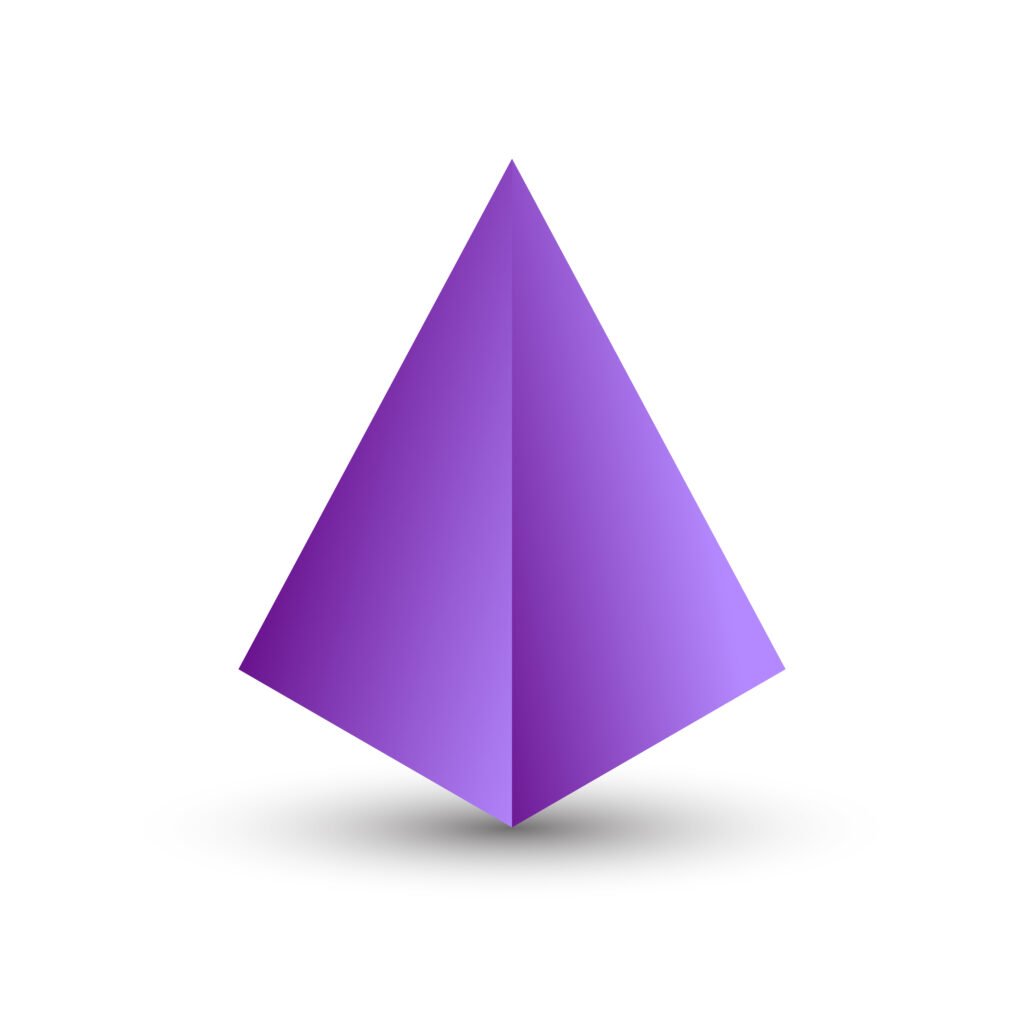
Here comes the ice cream cone, and you have the idea of a cone. It has a circular base that narrows to a point called the apex.
- One vertex
- One edge
- Combination of one flat
- One curved face.
- Cylinder
A cylinder is defined as a 3D geometric shape with two parallel circular bases connected by a curved surface. It has
- No vertices
- Two edges
- Three faces: two circular and one curved.
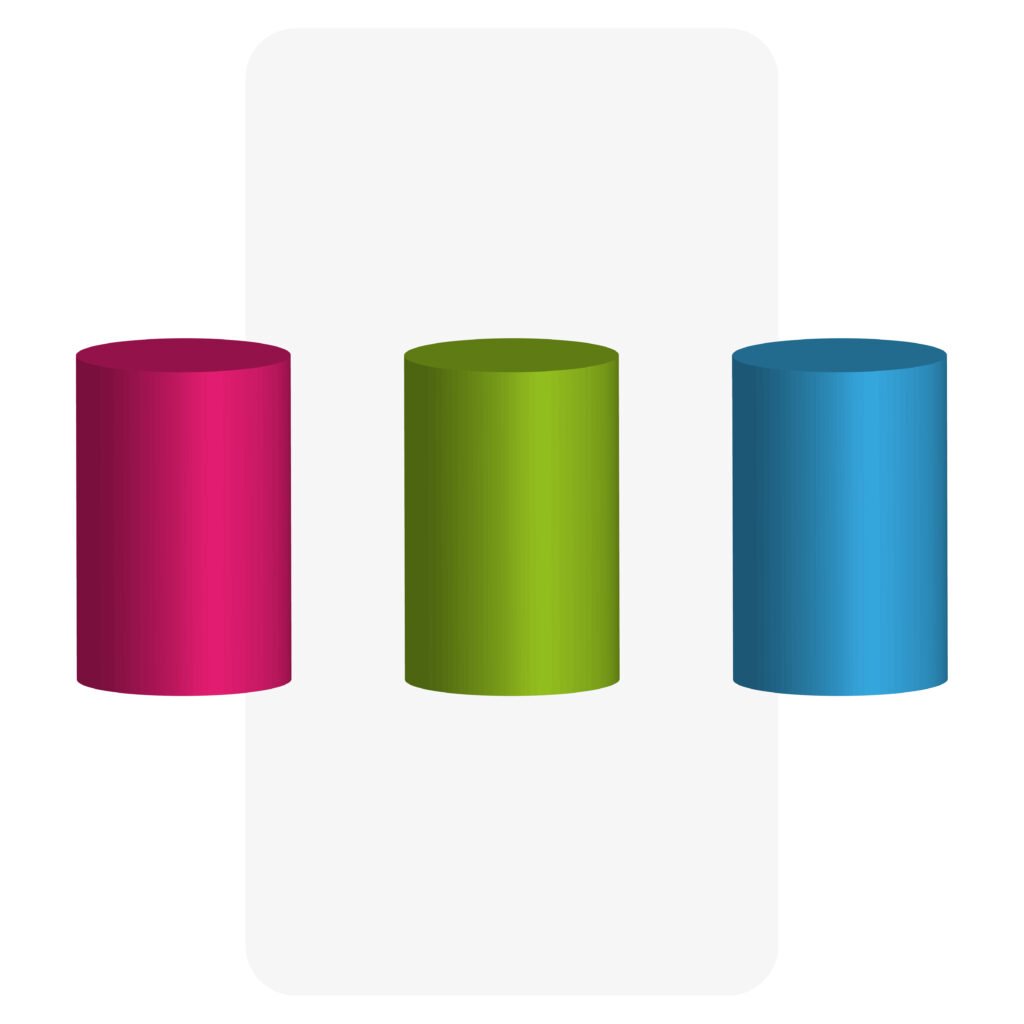
calculated by applying the formula V = πr²h, in which h is the height and r is the base’s radius. For example here the picture is a can of soda or a roll of paper towels, and you have got the cylindrical shape in mind.
- Pyramid
A Pyramid is defined as a solid shape, having a polygonal base and triangular sides that meet at a common apex. It consists of any shape such as triangular, square, quadrilateral or in the shape of polygon. Consider a square pyramid, it has
- 5 vertices
- 8 edges
- 5 faces
Ancient structures like the Egyptian pyramids are classic examples.
- Prism
A prism is defined as a three-dimensional structure with two equal ends, faces or flat surfaces, and a lengthwise cross-section that is the same. The prism is commonly referred to as a triangular prism. There is no curve in the prism. Also, a prism possesses
- Nine edges and six vertices
- Five faces: three rectangles and two triangles
Characteristics and Fun Facts
- Cube
Characteristics: All six faces of a cube are equal squares, and each corner has a right angle. Fun Fact: Playing with Rubik’s Cubes not only improves spatial attention but also helps enhance problem-solving skills.
- Sphere
Characteristics: No edges or vertices every point on the surface is equidistant from the centre. Fun Fact: The Earth is not a perfect sphere, but it’s close enough that we often refer to it as one for simplicity.
- Cone
Characteristics: A circular base connected to a single point at the apex. Fun Fact: The Ice cream cones are cone-shaped to provide a suitable and edible vessel for enjoying this frozen treat.
- Cylinder
Characteristics: Two circular bases with a curved surface connecting them. Fun Fact: The soda cans and water bottles often have a cylindrical shape, making them easy to hold and store in cup holders.
- Pyramid
Characteristics: A polygonal base with triangular sides meeting at an apex. Fun Fact: The Great Pyramid of Giza, one of the Seven Wonders of the Ancient World, was constructed with an outstanding level of accuracy and has fascinated scholars for centuries.
- Prism
Characteristics: Two identical polygonal bases connected by rectangular faces. Fun Fact: The ancient Egyptians used prisms in the construction, utilising their stability and pleasing geometric properties.
Shapes in Our Daily Life
Here, we are discovering shapes in our daily lives is a thrilling experience for your kids. Hence, we need to keep an eye out for these 3D shapes:
- Cube: We need to explore our room and find cubes in books, dice, and building blocks. These are a few everyday items that showcase the cube shape, offering a fun view of geometry.
- Sphere: We invest in engaging in sports with soccer balls and basketballs, or must observe the wheels on a bicycle. These spherical objects bring the idea of spheres to life, inspiring kids to recognise this shape in various activities.
- Cone: We can look out for traffic cones showing the way, enjoy a tasty ice cream cone, or celebrate with party hats. The cone shape appears in various contexts, making it a fun find in our surroundings.
- Cylinder: We can hold a soda can, sip from a drinking glass, or check containers holding various products. These common items display the cylindrical shape, allowing kids to connect geometry with their daily routines.
- Pyramid: We can look into the pyramids emerging in the design of some roofs and structures in architecture. We can encourage kids to spot these unique shapes in their environment, sparking interest in the world around them.
- Prism: It is interesting, for the challenge young minds to identify prisms in objects like buildings, where certain architectural features may take on this geometric form. We can follow these shapes to foster thanks for the role of geometry in our everyday lives.
Learning Through Play
Here, we explore the learning about 3D shapes can be exciting and enjoyable through interactive games and activities for the kids: Here are some of the examples:
- Puzzle Play
It provides children with puzzles featuring works shaped like cubes, spheres, cones, etc. As they fit the pieces together, they support their honour of these shapes.
- Quiz Time
It creates a quiz game with questions about the characteristics and uses of each 3D shape. This can be a fun way to support their knowledge.
- Hands-on Activities
It engages kids in hands-on activities like building structures with blocks, moulding shapes from playdough, or making mini pyramids from craft materials.
The Importance of 3D Shapes
- Mathematics Foundation:
The Mastery of 3D shapes is essential to learning geometric principles. It provides a concrete foundation for learning geometry, enabling students to visualise and use spatial relationships in mathematical problem-solving.
- Geometry Skills Development:
It understanding 3D shapes enables the development of geometry skills, which are important for students as they progress through different levels of education. It lays the groundwork for more complex geometric concepts and proofs.
- Enhanced Spatial Awareness:
It must recognise and work with 3D shapes to enhance spatial awareness. This skill is valuable in various mathematical disciplines, as well as in everyday activities that involve understanding and guiding physical spaces.
- Real-world Applications:
The 3D shapes are prevalent in the real world, from buildings and household items to natural objects. Teaching kids to identify and understand these shapes helps them make connections between theoretical concepts learned in the classroom and practical applications in their surroundings.
- Problem-solving Skills:
Its proficiency in using 3D shapes contributes to the development of essential problem-solving skills. The students learn to approach problems spatially, which is useful not only in mathematics but also in fields such as engineering, architecture, and design.
- Scientific Understanding:
In scientific disciplines, understanding the three-dimensional nature of objects is crucial. Ideas like molecular structures, geological formations, and celestial bodies all require a solid foundation in working with 3D shapes.
Fun with Shapes
Look to engage children’s creativity with these craft ideas:
- Paper Cone Animals:
We can transform paper cones into adorable animals. Like cut, fold, and glue to create 3D creatures like penguins, elephants, and more. Add googly eyes for extra charm.

- Geometric Mobiles:
You can construct a fascinating mobile using colourful cardstock shapes. Lets, connect cubes, pyramids, and spheres with string for a captivating 3D display.
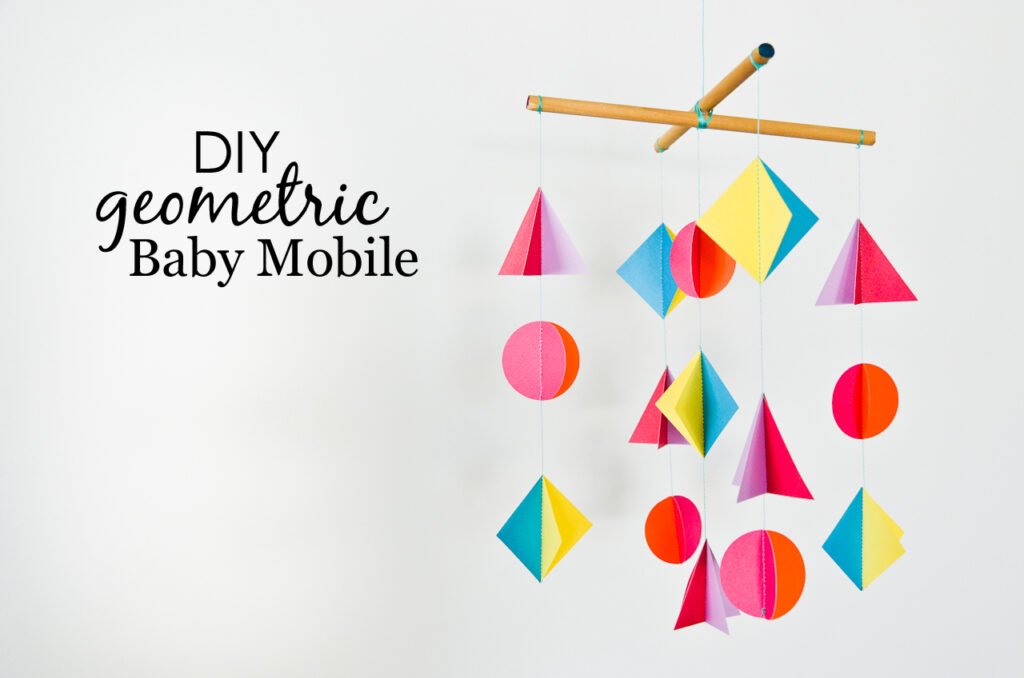
- Shape Sculptures:
Invest in building sculptures with wire and clay, moulding geometric shapes into unique designs for the kid’s creation. Paint the sculptures for a vibrant finish.
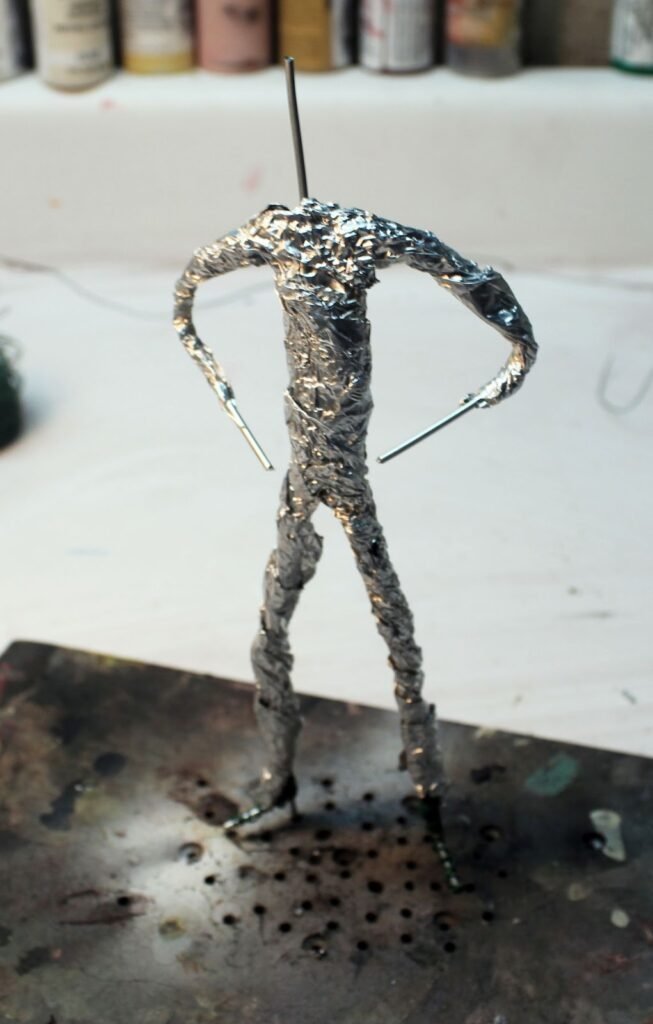
- Tissue Box Monsters:
We can turn old tissue boxes into quirky monsters. Attach 3D geometric features like pyramids and cylinders, then paint and decorate for a fun and functional craft.
Educational Resources
Here, are a few recommended books, apps, and websites that further enhance kids’ knowledge of 3D shapes.
- Books
These are a few books for the kids to enhance their 3D shape knowledge.
- “Shapes in Our World” by Moira Butterfield.
- “The Shape of Things” by Dayle Ann Dodds.
- Apps
These are a few Apps for the kids to enhance their 3D shape knowledge.
- “Shapes Toddler Preschool” (for younger kids).
- “Geometry Pad” (for older kids studying more advanced concepts).
- Websites
These are a few websites for the kids to enhance their 3D shape knowledge.
- PBS Kids: It has interactive games and videos about shapes.
- National Geographic Kids: It provides fun facts and activities related to geometry.
Conclusion
This discovery of 3D shapes through visual aids ignites a child’s interest and enhances understanding. The pictures vividly show geometric concepts, promoting a deep connection between theory and reality. The excitement of recognising cubes, spheres, and pyramids through colourful images fascinates young minds for studying, making learning a joyous adventure. Also, parents and educators play an important role by incorporating engaging visuals into lessons, turning education into an interactive experience. Encourage hands-on exploration and experimentation, allowing children to learn abstract concepts with ease. By investing fun into the learning process, we not only make education memorable but also make a solid foundation for a lifelong love of discovery and knowledge.
Exploring three-dimensional shapes through vivid visuals and interactive content, as highlighted in this insightful article, fosters a deep understanding and appreciation of geometric concepts among kids. This approach not only makes learning about shapes engaging but also bridges the gap between theoretical knowledge and real-world applications. For more enriching educational resources and insights, delve further into Chrysalis High.
FAQs
Why do we learn about 3D shapes?
Learning about 3D shapes helps all of us to understand the world around us and is essential for fields like architecture, design, and mathematics.
How many faces does a cube have?
Six faces make up a cube, and they are all identical squares.
Where can we find spheres in nature?
We can find spheres in various natural objects, such as fruits like oranges and in the shape of planets and celestial bodies.
